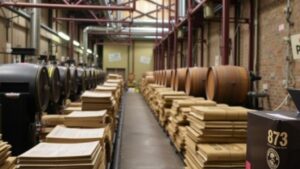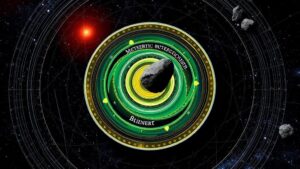How AI Decodes Ancient Trade Routes to Locate Overlooked Relics
Introduction
In recent years, the integration of artificial intelligence (AI) with archaeological research has unlocked new possibilities for understanding ancient trade routes and uncovering overlooked relics. By leveraging machine learning algorithms, researchers are now able to analyze vast amounts of historical data, geographical information, and archaeological findings to reconstruct the dynamics of trade in ancient civilizations. This article explores how AI decodes ancient trade routes, the methodologies involved, and the implications for the discovery of neglected artifacts.
Understanding Ancient Trade Routes
Trade routes have historically been the arteries of economic interconnectivity, facilitating the exchange of goods, culture, and ideas among civilizations. For example, the Silk Road, which connected China to the Mediterranean, was not merely a singular path but an intricate network of trade routes that flourished from approximately 130 BCE until the late 14th century CE. Such routes allowed for the movement of silk, spices, and precious metals, significantly impacting the cultures along the way.
The Significance of Trade Routes in Archaeology
Studying trade routes is essential for understanding the socio-economic conditions of past societies. The distribution of artifacts, like pottery and coinage, often correlates with known trading pathways. For example, the discovery of Roman coins in India corroborates maritime trade links established around the 1st century CE.
Artificial Intelligence in Archaeology
AI technologies, particularly machine learning and data mining, are revolutionizing archaeological methodologies. Researchers use AI to analyze large datasets–from satellite imagery to historic texts–identifying patterns and relationships that would be virtually impossible for human analysts to discern. This computational power enables archaeologists to focus on specific areas with greater potential for discoveries.
Data Collection and Processing
AI applications in archaeological research often start with the collection of data from various sources, such as:
- Geospatial data from satellite imagery
- Historical texts and chronicles
- Excavation reports and existing museum collections
Once the data is gathered, machine learning algorithms process it to identify correlations between geographic locations and artifact distributions. For example, researchers have employed convolutional neural networks (CNNs) to analyze satellite images for signs of ancient structures threatening to be obscured by natural vegetation or urban development.
Case Studies of AI-Driven Discoveries
Several notable projects have effectively utilized AI to decode ancient trade routes, leading to significant archaeological findings.
1. The Use of Satellite Imagery in Cambodia
Researchers in Cambodia used AI algorithms to analyze satellite images of the jungle surrounding the ancient temple of Angkor Wat. The AI identified hidden urban infrastructures that had lain undisturbed for centuries. By mapping these structures, archaeologists now have a clearer understanding of the ancient Khmer Empires trade mechanisms, which operated from the 9th to the 15th centuries CE.
2. Text Mining for Historic Trade Documents
A team of historians in Europe applied natural language processing (NLP) to digitized archives of trade documents from the Han Dynasty (206 BCE – 220 CE). By analyzing trade records, the AI was able to pinpoint key trade hubs and routes, revealing previously overlooked connections between different regions of China and neighboring countries like Korea and Vietnam.
Challenges and Limitations
Despite the promise AI holds for archaeology, several challenges must be addressed:
- Data Quality: Incomplete or inconsistent data can lead to inaccurate models.
- Interpretation: AI conclusions require validation from human archaeologists, which may introduce biases.
- Ethical Concerns: The use of AI in excavations raises questions about the ownership and representation of cultural heritage.
Conclusion and Future Directions
The convergence of AI and archaeology marks a transformative era in the study of ancient trade routes and the artifacts associated with them. As methods refine and data sources expand, the potential for groundbreaking discoveries grows exponentially. Collaboration between technologists and archaeologists will ensure that AI is utilized ethically, enabling the recovery and study of our collective human heritage.
Actionable Takeaways
- Researchers should invest in interdisciplinary collaborations to effectively harness AI technology.
- Continued development of ethical guidelines is crucial for the responsible use of AI in archaeology.
- Increased public awareness and accessibility of findings can foster greater appreciation for cultural heritage.



